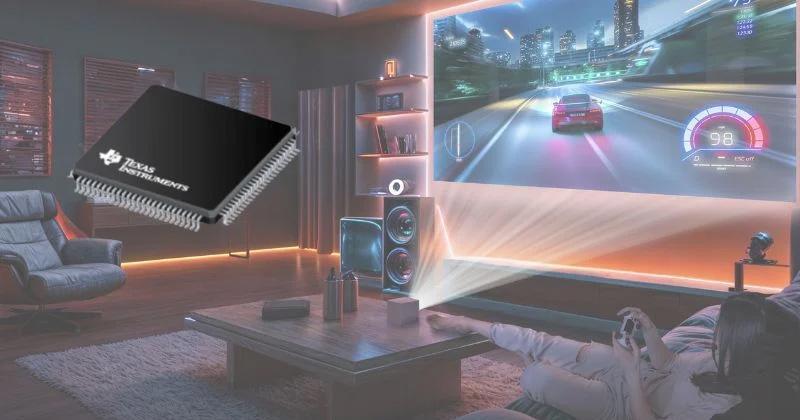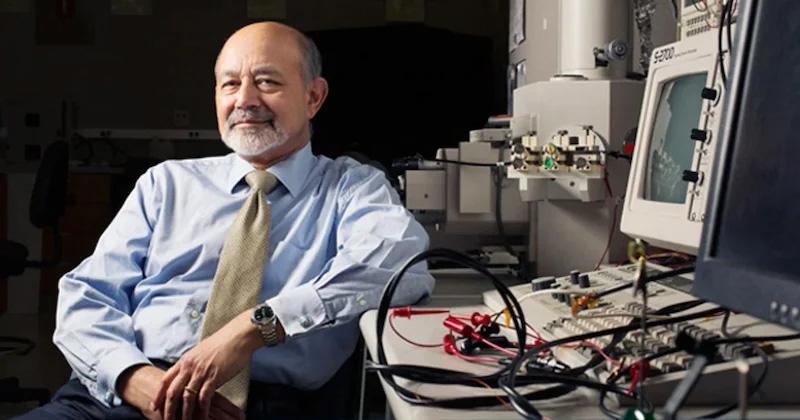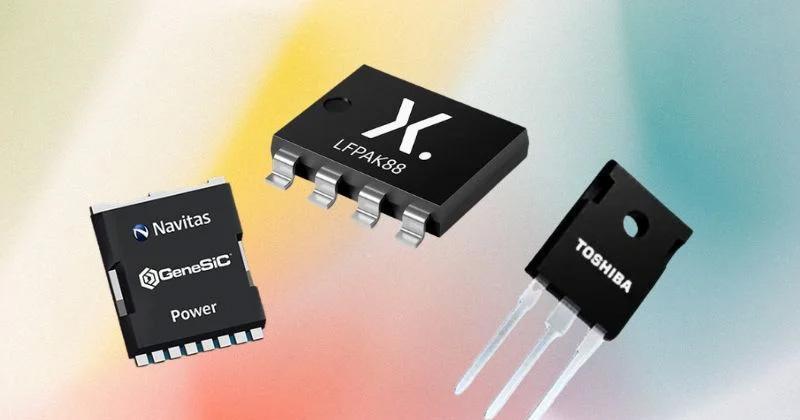
Allegro Launches Two New Current Sensor ICs With Compact Footprints
At CES 2025, Allegro MicroSystems announced two new current sensor ICs—the ACS37030 and ACS37220—that show promising performance benchmarks in a compact package design. Leveraging proprietary packaging technologies and advanced magnetic sensing methodologies, the new sensors are said to achieve industry-leading precision, efficiency, and footprint reductions.

Ram Sathappan, vice president of global marketing and applications at Allegro.
All About Circuits met with Allegro’s Ram Sathappan at CES 2025 to learn more about the release firsthand.
The ACS37030:A High-Bandwidth Current Sensor in a Small Package
According to Allegro, the ACS37030 and ACS37220 employ novel architectures to deliver precise current sensing in smaller form factors without compromising on electrical isolation or performance.
“We released a five-megahertz current sensor last year, typically in a big package,” Sathappan said. “With innovation in packaging, we cut it down to an 8-pin equivalent package while maintaining the same isolation ratings.”
For example, the ACS37030 (datasheet linked) integrates both Hall-effect and inductive coil sensing paths, combining their outputs to achieve a bandwidth extending up to 5 MHz. This minimizes noise as frequency increases and unlocks rapid response times of approximately 40 ns. Its compact SOIC package incorporates a 3,500 VRMS isolation barrier that enables it to handle operational voltages up to 840 VRMS for basic isolation or 420 VRMS for reinforced applications.
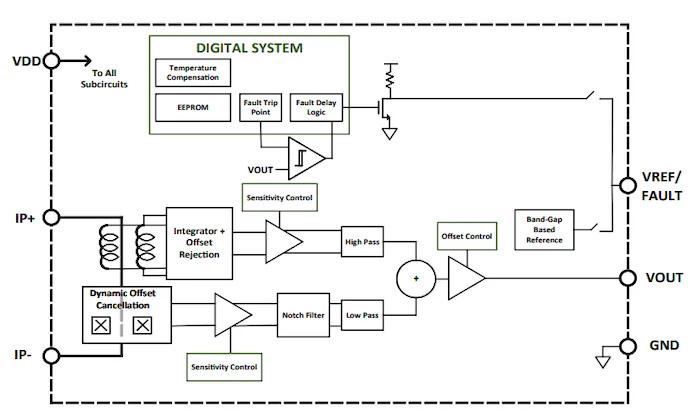
Functional block diagram of the ACS37032. Image used courtesy of Allegro Microsystems
Allegro states that the ACS37030’s high bandwidth suits applications involving wide-bandgap semiconductors like GaN or SiC, which often require rapid fault detection to protect high-value electronics.
“For GaN and SiC systems in high-voltage applications, you need a faster response and high bandwidth to protect expensive electronics,” Sathappan remarked. “That’s where our products come in.”
The ACS37220: A Current Sensor for High-Current Monitoring
The ACS37220 (datasheet linked) targets high-current applications with its ultra-low internal conductor resistance of less than 100 μΩ. Its 7-pin QFN package, measuring 4 mm × 4 mm, supports current sensing ranges of up to ±200 A with a 150-kHz bandwidth.
Allegro’s proprietary differential Hall plate technology enables exceptional immunity to common-mode magnetic fields for improved accuracy in noisy environments. For these reasons, Allegro is positioning the ACS37220 as a solution for applications requiring high-current monitoring, such as DC-DC converters, solar inverters, and variable frequency drives.
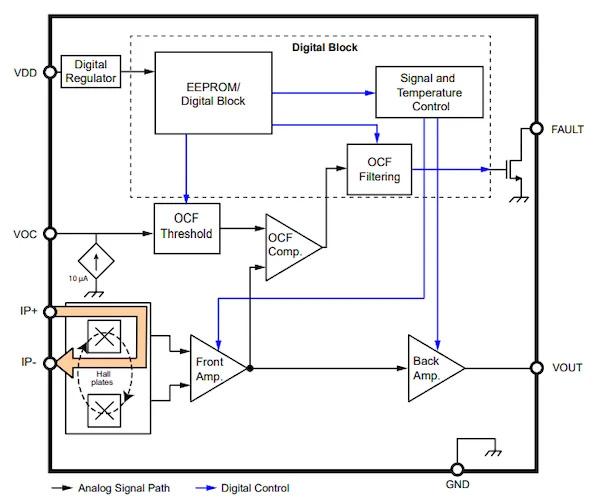
Functional block diagram of the ACS37220. Image used courtesy of Allegro Microsystems
Allegro has also integrated dynamic offset cancelation and digital temperature compensation into both ICs for consistent performance across their operating temperature range of –40°C to 150°C.
“By integrating these features into a single package, we save engineering time, reduce system size, and improve EMI performance—benefits you don’t get with traditional approaches,” Sathappan said.
A Shift From Shunt-Based Sensing
An important highlight of Allegro’s latest sensors is that they depart from traditional shunt-based current sensing methodologies.
While shunt resistors are effective and inexpensive, they introduce several limitations. For example, the inherent power dissipation in shunt resistors results in notable energy losses, which become deleterious in battery-powered applications where every milliwatt counts. Furthermore, as current increases, the thermal stress on a shunt resistor can lead to measurement drift and long-term reliability issues.
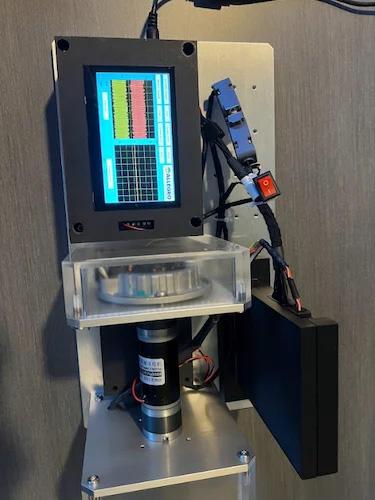
Allegro’s demonstration at CES 2025 shows the current measurement accuracy of the new current sensors.
Magnetic sensing, as employed in the ACS37030 and ACS37220, offers a fundamentally lossless alternative. These sensors use Hall-effect and inductive coil technologies to measure current without requiring a direct electrical connection to the primary conductor. Such an approach eliminates resistive losses and significantly enhances thermal stability. Additionally, magnetic sensors are inherently isolated, reducing the need for complex isolation circuitry often required with shunt-based systems.
Beyond efficiency and accuracy, the shift to magnetic sensing addresses scalability and system complexity. Unlike shunt-based solutions that require precise resistor matching and additional amplification circuitry, magnetic sensors integrate these functionalities into a single IC. This integration reduces design time, component count, and PCB real estate, offering cost and reliability benefits across various applications.
“The reason magnetic current sensing is better than shunt-based sensing is its lossless nature,” Sathappan explained. “Over time, shunt resistors have variant errors, so your accuracy and measurements may be off. Magnetic sensing avoids this entirely.”
A More Efficient Future
As automotive and industrial systems converge in their requirements for precision, efficiency, and reliability, Allegro is sharpening its focus on the area of overlap.
“We’re not here to offer a big catalog of 7,000 parts,” Sathappan concluded. “Instead, we’ve built our portfolio around e-mobility, clean energy, and industrial automation, where the synergy across these sectors drives real innovation.”

